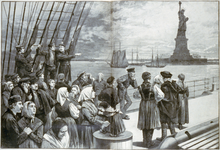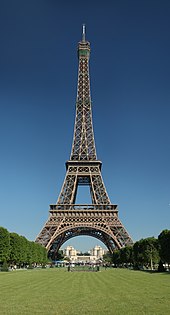My father and grandfather always used landmarks to navigate into mountains or forests. If you didn't have this skill it wasn't wise to go into forested areas especially. The same with deserts or literally any new place you go to. I was taught this as a boy too. So, as you walk into a new place or area you make a mental note of objects. So, anything unusual you make a note of in your mind or on paper but sometimes both. People who don't do this often don't come back from the wilderness ever.
It is important to consider this even if you are drunk or on medications legal or otherwise. If you lose your bearings in the wild (especially with no cell service) you might never be found. So, consider this before you run off a few blocks into the wilderness, especially at night when you really can't see where you are. So, daylight navigation might be possible but night time navigation often is not even with a flashlight. So, this is something to consider if you would like to be alive longer.
First here is something on natural and man made landmarks:
Natural
Natural landmarks can be characteristic features, such as mountains or plateaus. Examples of natural landmarks are Table Mountain in South Africa, Mount Ararat in Turkey, Uluru in Australia, Mount Fuji in Japan and Grand Canyon in the United States. Trees might also serve as local landmarks, such as jubilee oaks or conifers. Some landmark trees may be nicknamed, examples being Queen's Oak, Hanging Oak or Centennial Tree.Man made
In modern sense, landmarks are usually referred to as monuments or distinctive buildings, used as the symbol of a certain area, city, or nation, such as the Statue of Liberty in New York City, Eiffel tower in Paris, Big Ben in London, Christ the Redeemer in Rio de Janeiro, Sydney Harbour Bridge in Sydney, or Brandenburg Gate in Berlin. Church spires and mosque's minarets are often very tall and visible from many miles around, thus often serve as built landmarks. Also town hall towers and belfries often have a landmark character.begin quote from:
https://en.wikipedia.org/wiki/Landmark
Landmark
From Wikipedia, the free encyclopedia
This article is about objects used in navigation. For visitor attractions, see Tourist attraction. For other uses, see Landmark (disambiguation).
| This article needs additional citations for verification. (January 2016) (Learn how and when to remove this template message) |
An 18th century painting of a VOC ship with Table Mountain in the background, used by navigators as the landmark to sail around southern tip of Africa.
In modern use, the term can also be applied to smaller structures or features, that have become local or national symbols.
Contents
Etymology
The Statue of Liberty, a famous landmark of New York City and United States, greets the newly arrived immigrants, located near Ellis Island where millions of immigrants first touched U.S. soil.
In modern usage, a landmark includes anything that is easily recognizable, such as a monument, building, or other structure. In American English it is the main term used to designate places that might be of interest to tourists due to notable physical features or historical significance. Landmarks in the British English sense are often used for casual navigation, such as giving directions. This is done in American English as well.[citation needed]
In urban studies as well as in geography, a landmark is furthermore defined as an external point of reference that helps orienting in a familiar or unfamiliar environment.[2] Landmarks are often used in verbal route instructions and as such an object of study by linguists as well as in other fields of study.[citation needed]
Types
The Eiffel Tower - tallest in the world from 1889 to 1930 and a famous Paris landmark
Natural
Natural landmarks can be characteristic features, such as mountains or plateaus. Examples of natural landmarks are Table Mountain in South Africa, Mount Ararat in Turkey, Uluru in Australia, Mount Fuji in Japan and Grand Canyon in the United States. Trees might also serve as local landmarks, such as jubilee oaks or conifers. Some landmark trees may be nicknamed, examples being Queen's Oak, Hanging Oak or Centennial Tree.Man made
In modern sense, landmarks are usually referred to as monuments or distinctive buildings, used as the symbol of a certain area, city, or nation, such as the Statue of Liberty in New York City, Eiffel tower in Paris, Big Ben in London, Christ the Redeemer in Rio de Janeiro, Sydney Harbour Bridge in Sydney, or Brandenburg Gate in Berlin. Church spires and mosque's minarets are often very tall and visible from many miles around, thus often serve as built landmarks. Also town hall towers and belfries often have a landmark character.See also
- Cultural heritage management
- National landmark (disambiguation)
- National symbol
References
- Lynch, Kevin. "The image of the city". MIT Press, 1960, p. 48
External links
| Look up landmark in Wiktionary, the free dictionary. |
 Media related to Landmarks at Wikimedia Commons
Media related to Landmarks at Wikimedia Commons
|



No comments:
Post a Comment